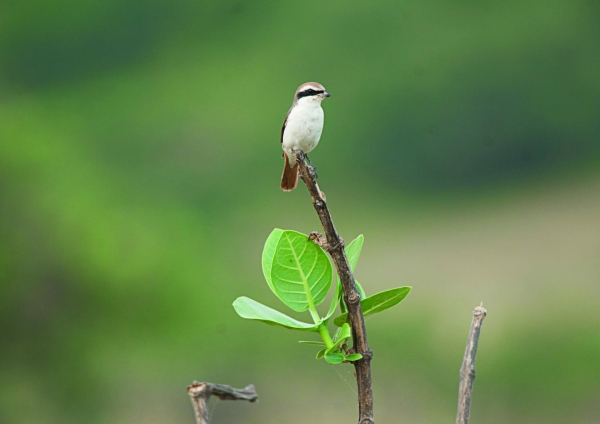
The stunning Red-Backed Shrike (Lanius collurio) has recently caught the attention of birdwatchers and nature enthusiasts alike. Known for its striking appearance and predatory nature, this bird is a fascinating example of beauty and ferocity in the wild. Widely distributed across Europe, Asia Minor, Russia, South Africa, and parts of the Middle East, the Red-Backed Shrike thrives in a variety of environments, showcasing its adaptability.
This charismatic creature is particularly fond of open forests, especially those boasting rich acacia trees, lush meadows, and rugged mountainous terrains, typically at elevations ranging from 1000 to 2000 meters above sea level. The landscape serves as the perfect backdrop for this bird to flaunt its stunning plumage while hunting for its next meal.
A diet primarily composed of insects such as beetles and locusts makes the Red-Backed Shrike a key player in its ecosystem, although it doesn’t shy away from small frogs and lizards either. Observations reveal that these birds exhibit impressive hunting skills, often spotted perched atop thorny trees or bushes, scanning their surroundings for potential prey.
One of the most captivating aspects of the Red-Backed Shrike is the clear distinctions between the males and females. Males are easily recognizable by their elegant black facial mask and body cloaked in light brown feathers, complemented by a black tail adorned with white edges. Conversely, female shrikes sport a more subtle appearance with a brown head, cheek spots, and finely striped gray and black bodies.
As the breeding season approaches, typically around July, male shrikes embark on the crucial task of nest selection, favoring high perches in thorny or coniferous bushes—often more than two meters off the ground. Female shrikes will lay between four to six speckled white eggs, with a nurturing incubation period lasting around two weeks. Once hatched, the young shrikes emerge from their nests approximately 20 days later, ready to embark on their journey in the wild.
In the Dhofar Governorate, birdwatchers can spot the Red-Backed Shrike in its natural habitat, gliding through the landscapes of pastures and mountains. This bird’s presence not only adds vibrancy to the region’s biodiversity but also marks it as a must-see for avian enthusiasts.
Whether you are a seasoned ornithologist or simply a lover of nature, the Red-Backed Shrike offers a thrilling glimpse into the wonders of wildlife. It acts as a reminder of the beautiful diversity found within our ecosystems, enriching the experience of anyone who encounters it in the wild.
Stay connected with future updates on the amazing wildlife of the region and beyond, right here on Africazine! #WorldNews #Lifestyle #Environment #Tourism


